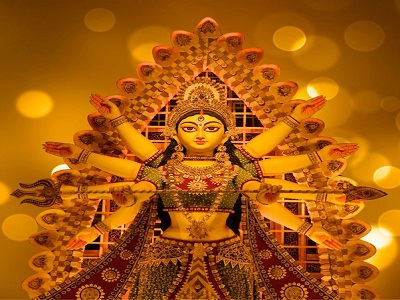The scriptures state that during Navratri, devotees should pray to Maa Durga in all nine of her forms. The worshipper of the mother must adhere to a variety of regulations and procedures. There is a long history of doing Havan as part of one's devotion to the mother along with other practises such as fasting, Kanya Puja, Kanya Bhoj, and charitable giving. Navratri worship is deemed complete if Havan is performed as well. When a Kalash is established, it becomes a need for the devotees to do Havan in Delhi. The Havan's primary five rules have been laid down, and they must be followed.
The city of Havana is a haven of joy and plenty. Following adoration of the nine Maa Durga forms, the Havan is said to be conducted in Navratri's final days. Havan removes bad energy from the dwelling, allowing good energy to circulate freely. As a result, the seeker will always be surrounded by joy and riches.
Pt Ganesh Prasad Mishra, a Vedic ritualistic astrologer, claims that the medicinal medicines we present in the havan to appease the mother purify the surrounding atmosphere. A Vedic ceremony, Havan is also referred to. Hindus believe that everyone should have Havan done in order to be happy and prosperous.
Despite the fact that you may do Havan on your own, the regulations state that a priest or a pandit must be present to complete the ritual. According to some scholars, even if the priest isn't there, the worshipper may still conduct the Havan in Delhi. For this, the seeker must adhere to a set of guidelines. Taking a morning bath in pure water, for example, involves renunciation of material possessions for the duration of the bath in order to promote mental clarity and peace.
The ceremony is incomplete without the mango stem and leaves, which need a variety of plants and other materials. There are a wide variety of plants that may be used for this purpose, including mango wood and leaf, sycamore stem and bark, bel, palash, sandalwood neem ashwagandha brahmi liquorice root rice sesame clove camphor cow's ghee cardamom frankincense Additionally, a dried coconut or gola, a Kalava or red-colored fabric, and a havan kund are also required.
It is necessary to light a fire with mango wood and camphor after collecting the havan material from the priest and the jajman. The Havan in Delhi begins with chanting after this. Havans alternatively burn the items accumulated throughout this period. As a general rule, the havan should be conducted by a priest, and those who desire it should assume the position of the jajman. During the Havan Vidhi, there are many different sorts of mantras and guidelines to follow.

